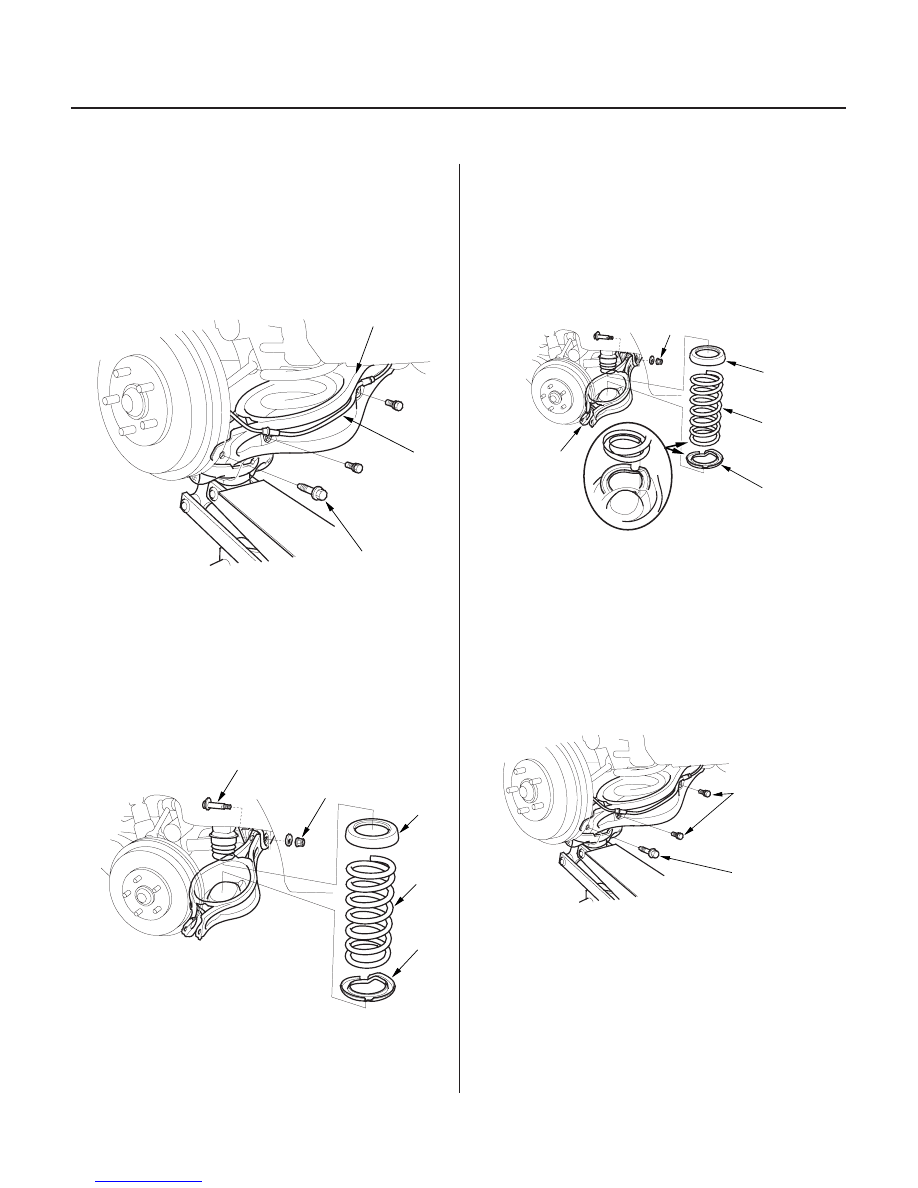Honda Odyssey 2004. Manual - part 297

*02
22
*04
*03
S0X4A00B44100037701KDAT25
Removal
Installation
18-28
Rear Suspension
Lower Arm B Removal and Installation
B
A
C
C
A
B
D
E
12 x 1.25 mm
83 N·m (8.5 kgf·m, 61 lbf·ft)
C
B
D
A
6 x 1.0 mm
9.8 N·m
(1.0 kgf·m,
7.2 lbf·ft)
A
12 x 1.25 mm
74 N·m
(7.5 kgf·m,
54 lbf·ft)
1. Raise the rear of the vehicle, and support it with
safety stands in the proper locations
(see page 1-15). Remove the rear wheel.
2. Position a floor jack at the connecting point of
lower arm B and the knuckle.
3. Remove the wheel sensor (A) from the lower arm B.
Do not disconnect the wheel sensor connector.
4. Remove the flange bolt (C) that connects the lower
arm B and the knuckle.
5. Lower the floor jack gradually.
6. Remove the spring (A), upper spring seat (B) and
lower spring seat (C).
7. Remove the self-locking nut (D) and flange bolt (E).
1. Lower the rear suspension, position the lower arm
B, and loosely install the self-locking nut.
2. Install the spring (A), and upper spring seat (C).
Align the bottom of the spring and the lower spring
seat (D) with the lower arm B as shown.
3. Position a floor jack at the connecting point of the
lower arm B and the knuckle.
4. Align the bolt hole with the holes in the lower arm
B and the knuckle by raising the flange bolt.
5. Raise the rear suspension with a floor jack until the
vehicle just lifts off the safety stands.
6. Tighten the flange bolt (A) and self-locking nut.
7. Install the wheel sensor.
8. Install the rear wheel.
9. Check the rear wheel alignment, and adjust it if
necessary (see page 18-5).
03/07/29 09:51:21 61S0X050_180_0028